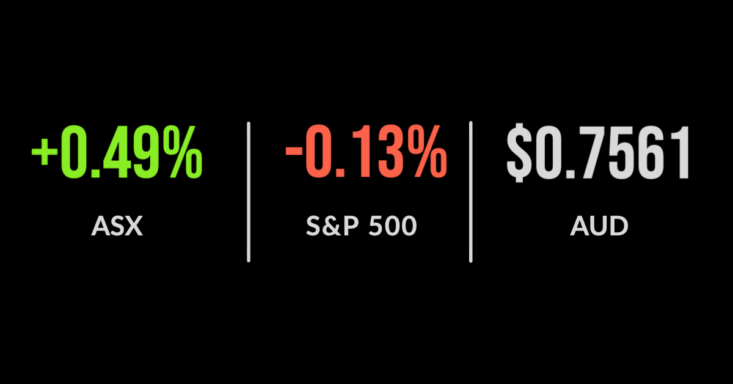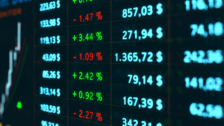Six consecutive weeks of gains
Six consecutive weeks of gains, CSL (ASX:CSL) lower as vaccine pulled, Fortescue (ASX:FMG) overtakes ANZ Bank (ASX:ANZ)
The ASX 200 (ASX:XJO) finished the week on a negative note, falling 0.6%, but managed to deliver its sixth straight week of gains, adding 0.1% over the five days.
The majority of the weakness was driven by the 3.2% fall in CSL (ASX:CSL) shares after the University of Queensland vaccine study was pulled.
According to reports, the potential vaccine had resulted in false positive tests for HIV during its phase one trials resulting in its immediate cancellation. The news highlights the fine line that researchers are towing in their search for a cure.
Importantly, CSL was not creating this vaccine, rather helping to support its production if successful, having also partnered with AstraZeneca (LON:AZN) for what is the first peer reviewed study.
Fortescue (ASX:FMG) was a clear leader, adding 11.4%, making Twiggy Forrest another $2.6 billion with the iron ore price in a sweet spot, hitting an eight year high of USD$150 per tonne.
Westpac Bank (ASX:WBC) seemed to offer an apology to investors, pledging a return to a ‘steady stream of distributions’ in 2021.
This despite flagging that management had not moved quickly enough to deal with what they deemed non-financial risks, including the money laundering issues that resulted in an Australian record $1.3 billion fine (effectively paid for by shareholders).
US markets broadly weaker, Disney (NYSE:DIS) flexes it’s muscles
The US markets couldn’t sustain their positive run, the S&P 500 falling 0.1% and posting a weekly loss of 1.0%.
The tech-focused Nasdaq fell 0.2% as pressure on the social media companies gained steam, falling 0.7% over the five days.
A ‘stopgap’ spending bill that would allow the US State and Federal governments to keep running over Christmas buoyed hopes that a full stimulus package may be passed, with the potential to put stave off a ‘stimulus cliff’ on 31 December.
The Walt Disney Co (NYSE:DIS) was by far the highlight (Disclosure: I’m a shareholder) hitting a record high after jumping 13.6% on Friday.
The boost came after management flagged a Netflix-like growth trajectory for their streaming service Disney+, expecting 350 million subscribers by 2024 (they currently have 86 million).
This growth will be powered by an incredible slate of new television shows and movies, which reflect the muscle of the ‘content machine’ that is Disney.
There are ten new Marvel and Star Wars TV shows to be released and another 15 live action series, all of which will be exclusive to Disney+.
Similarly, they will save big name movies for the cinema, including a new Indiana Jones, Black Widow and Star Wars among others.
Despite a difficult year for their parks and cruises division, the company appears to be successfully ‘pivoting’ and will place huge pressure on its competitors to spend on their own original content.
Industry size on show, iron ore singlehandedly saving the budget, quality vs. size
Are we seeing the beginning of another ‘two speed’ economy?
The commodity super cycle that supported Australia throughout the GFC appears to have returned, with this week’s incredible rally in the iron ore price having far reaching implications for the economy.
Whilst supportive of the budget, the persistent strength in the AUD will have a long-term impact.
Iron ore’s importance to the Chinese economic story means it should remain immune from the risk of tariffs, but I’d expect nearly every other sector to be hit.
As a result, it has never been more important to be investing directly into Asia, rather than through Australian ‘proxies. Australian Super this week reported that their assets now exceed $200 billion, or 7% of all superannuation in Australia.
But the group are becoming victims of their own success, as their size restricts the investable opportunities available, forcing them to buy only the largest ‘trophy’ assets at premium prices or enter bidding wars to take public companies private, as they did this week.
The flood of IPO’s across the world continued, with Airbnb and Doordash listing in the US, the former doubling on debut.
In fact, US IPO’s have on average delivered returns of 35% this year.
There is a clear quality difference between the companies listing in Australia vs. the US, with many more small market (and small cap) companies opportunistically listing in Australia despite being growth challenged, compared to the US where the best global companies are seeking access to capital.
Either way it should be seen as a positive that more companies are joining listed markets after a flood of privatisations over last decade.
The trend reiterates my core view being ‘Australia for value, overseas for growth’.











